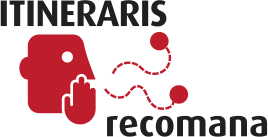Les millor valorades. Top 10
Què et ve de gust?
Quina disciplina vols?
Quina edat?
Properes representacions
Ramon
Del 18/12 al 18/12
9.0
Teatre
Mar i Cel. 2024
Del 18/12 al 18/12
9.0
Teatre |
Musical
Hermafrodites a cavall o La rebel·lió del desig
Del 18/12 al 18/12
8.9
Nous formats
Gola
Del 18/12 al 18/12
8.6
Teatre |
Circ




